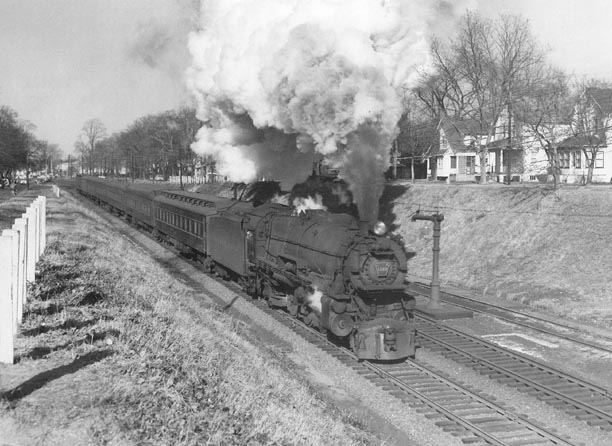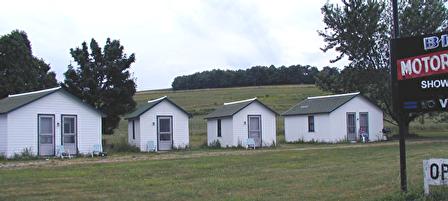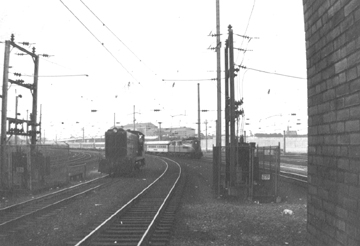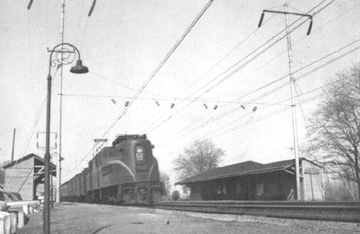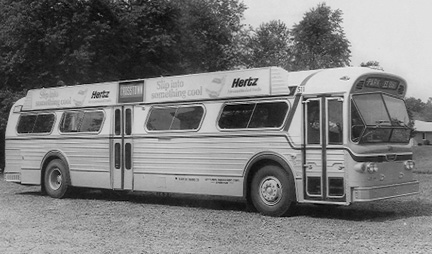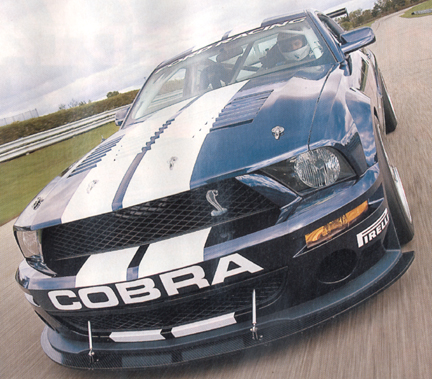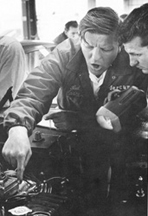Friday, November 24’s “Writer’s Almanac” included mention of the novel “Tristram Shandy,” which I was assigned to read and do an oral report on for my twelfth-grade English teacher at Brandywine High School in 1962, Dr. Zink.
“Writer’s Almanac” is the short daily feed from Garrison Keillor. It’s date-specific, so morning-man has to play the right feed, and on Saturday he can’t play all the week’s columns, like he does with others.
He can only play the Saturday-feed.
I dreaded Dr. Zink at first. He had a reputation of being distant and difficult, but was the first one that told me I could write.
He’d often assign pop creative-writing essays as we sat down in his class.
Obviously this whole gig was directed at me. Our class was the dregs of college-prep; the ones that would drop out of University of Delaware and become cannon-fodder in Vietnam.
“What do you want us to do here?” I’d ask.
“Just fabricate something with your imagination and let ‘er rip.”
I’d conjure up some tortured mess, and he’d oooo and ahhh. “This is fabulous,” he’d say.
“Are you kidding?” I’d say. “It’s garbage!”
Tristram Shandy crashed mightily in flames. It was Zink’s feeble attempt to inspire me, but teacher-wisdom. I can see him being advised in the smoke-filled faculty-lounge by his turgid peers.
There was no way I could read it, and rendering an oral report wasn’t writing. “Obviously you didn’t read it,” Zink said. He was crestfallen.
My muse ducked into seclusion after that, and didn’t flower again until my final year at college, when the editor of the school newspaper (
Houghton Star) asked me to pen a report of upgrades of the college-offices.
While there the most amazing and hilarious thing happened. I asked a secretary, wife of the Academic-Dean, what she thought of the tangled mess in her office.
Her response was
incredible. I reported
exactly what she said: “Mrs. Lynip allowed that she liked the dulled-brown color of her office’s radiators. And the confusion of varicolored wires and tin-plate conduit boxes” (Houghton Star, 2/25/66).
And so began “of Men and Things,” a biweekly campus overview.
Zealots will recognize
“of Men and Things” was part of a religious-book title — I headlined a column with it, and thereafter the editor named my column that.
Houghton was deeply religious — so far out from civilization it could be “a little island of decency.”
And of course most of the student-body, many of whom were from the Eastern Megalopolis, were forever parrying with the fevered zealots that ran the college.
A tradition of such writing in the college-paper had begun two years earlier, namely an editorial segment by senior Dan Willett (and another), the editor of the paper.
The Star tried to carry on such writing after he graduated, and had two guys doing an imitation.
But once when Willett came back he told the editor it was
me that was writing like him. —The two guys had his previous space, but were only boring wannabees.
Most memorable to me was the paean I wrote on the retirement of “Sam-the-Soda-Machine” at the college radio-station, WJSL.
That soda-machine had been around for eons, and to me was a campus fixture, as much as the buildings.
Someone (likely from the soda-distributor) told me it was being taken out because it dispensed glass bottles, and the soda-companies were switching to aluminum-cans.
The retirement of “Sam-the-Soda-Machine” also meant the end of
SunDrop, much like Mountain-Dew, only better.
The local distributor refused to can SunDrop, and SunDrop seemed to be at the end of their rope anyway (it’s still made — I got hits).
I first tasted SunDrop at Sandy Hill; but that was probably eight-ounce bottles. Sam-the-Soda-Machine was 10-ounce.
To me the departure of SunDrop was big-bigitty-big.
An ersatz student-center had also been begun: the “Bent-Cent.”
It prompted a treatment of soda-can opening, which at that time were not pop-tops.
Especially laughable were the feeble attempts of our ex-marine campus shrive wannabee trying to drink soda out of a one-hole can.
Suck-suck-suck-suck. “Oh I’ll be all right!”
The muse went into remission again after I graduated Houghton, and didn’t resurface until about 1971 when I was asked by City/East newspaper if I knew anyone that could do motorsports coverage.
City/East was a tiny weekly published by Bill and MaryAnna Towler out of their house in Rochester’s funky Park Avenue district.
It was a way for MaryAnna to mouth off. Bill still worked at Kodak, and sold advertising-space on the side.
MaryAnna was also raising a family, but obviously that was not enough.
City/East was also an outgrowth of the massive effort to get New York State to not bulldoze a path smack through southeastern Rochester neighborhoods for an expressway.
New York was figuring to get their right-of-way through eminent domain, but such a protest arose they had to capitulate and tee their expressway from the south into the already existing Outer Loop.
What right-of-way they had — aimed at those neighborhoods — had to be abandoned or put back on the market.
Houses had already been torn down; and you can still find state-owned property.
Our first City/East was free, but I was so impressed I began subscribing. By comparison, the local newspaper establishment (Gannett) was
awful.
Since I was trying to freelance photography, I called about doing a shoot. I was assigned to shoot a food-commune meeting, which I did available-light with pushed TriX. I suppose they used one — they loved that style.
Then Bill, an ardent sportscar enthusiast (he owned a 356 Porsche), knowing I was also a sportscar-enthusiast, asked if I knew anyone that could do sportscar coverage.
He wanted to start sportscar coverage — which Gannett didn’t do — and thought it might be a revenue-generator.
“No I don’t,” I said; “but I could probably give it a try.”
Thus began my City/East motorsports coverage; a gig that extended three years.
The paper expanded to four pages (from two); two of which were mine.
We ran a giant introductory treatment, including a large black-and-white photo of American Trans-Am cars approaching the uphill hairpin at
Le Circuit Mont Tremblant near Montreal.
It was a strange and difficult time.
I had to report every local sportscar race, which to me was Watkins Glen, Mosport near Toronto, and Lime Rock in Connecticut; Trans-Am, Can-Am and Formula One (among others — the Glen also had a six-hour race like LeMans for prototypes).
What usually happened is a tortured attempt to get the grammar/syntax right.
It wasn’t flowing naturally, and this was before word-processing, when you had to type from scratch on a typewriter.
Nevertheless a few things stand out.
Between races I would do big sections on local motorsports; rallying, autocross and car-shows.
I also rode in a dune-buggy.
Most memorable is a treatment I did on a small hot-rod show.
It brought back memories of hot-rodding in Erlton, particularly the young Marchioni (sp?) boys on Wesley Avenue, hot-rodding around in a primered ‘40-Ford two-door sedan with a wheezing flathead.
“Arms slung over window-sills, hair combed into greasy ducktails, brazenly puffing on cigarettes,” they prompted my mother to call the police.
Dippity-Dan showed up in his filthy black ‘51 Ford with his red gumball flashing: “protect and serve, Mrs. Hughes.”
Another time was the Trans-Am at Lime Rock in 1973 or ‘74. Trans-Am no longer had factory participation, and were even allowing ferrin cars; e.g. the Porsche 911.
Chevrolet was surreptitiously represented by Rochester-driver Warren Agor — he had a 427 Camaro.
The Porsche was Floridian Peter Gregg, who has since committed suicide.
For some strange reason I had been given a trackside photo-pass — I rarely got one. So I set up outside a tight hairpin at the end of a long straight.
Agor had the pole, so would fly at the hairpin at 160+.
He’d slide the heavy Camaro through the turn, pitching and yawing
all over, massive forearms sawing at the wheel.
Gregg, in hot pursuit, would steam through the turn in his 911 with one, two, often three wheels in the air.
It was the most impressive display of hammer-and-tongs auto-racing I had ever seen; so we drove home next day with that ringing in my head.
After numerous fits-and-starts, I gave up and wrote what was in my head.
It flew fabulously, but I still had to report the race.
“You were really cooking,” my friend Albert said; “but all-of-a-sudden ZOOP!”
(Albert [Stokes] was a columnist at City/East.)
Other stuff went fairly well; e.g. my coverage of a local off-road rallyist who had entered a Volvo in the
Press-on-Regardless rally in Michigan.
I also got the local road-rallying community all bent-out-of-shape after I attended a rally and reported
exactly what I saw, which seemed to be sheer mayhem.
Race-coverage drifted away from strict reportage. I remember attending sportscar races at the Glen, and reporting swimming in the lake.
But they wanted me to keep doing what I did. It had devolved into a page-or-two every two weeks, summers only; and maybe 4-6 inches of briefs on the off-weeks.
The one-or-two pages usually had art. I remember running
three pictures of the 1972 (or ‘73) Canadian Gran Prix at Mosport.
The swan-song of my sojourn at City/East was to take my friend Albert to the 1973 Grand Prix of the United States at Watkins Glen, a muddy bacchanalia of beer and boobies.
Albert was totally
blown away. He had never seen anything like this before.
He penned a gigantic treatment, which, in credit to City/East, they ran. I think it was six pages; two of which (the center-spread) were all art; 6-7-8 pictures; some of which were people swilling beer atop the burned-out mud-slathered hulks of overturned cars, and a blurred shot of a degraded youth lobbing a half-empty beer-can with a lighted ash-can inside.
A race-report by me ran the following year decrying the insanity of the safety initiative of Formula-One drivers — a Formula-One driver had been decapitated, and the Glen tried to hide it.
The Glen was victim of a misdirected Formula-One driver safety initiative which required lining the track with guardrail, three-high in many places. (That guardrail had decapitated the driver.)
I’d had enough. Formula-One drivers were being killed willy-nilly, and I wasn’t making any money.
I had sent some of my stuff to Motor Trend magazine, and they were interested, but it would have meant interviewing in Californy for who-knows-what. So I pulled the plug. (They hired someone else; who lasted about a year.)
I also made an attempt to interview at every advertising agency in Rochester, but nothing came of it.
So I went into bus-driving; a job that was only supposed to be temporary, but lasted 16&1/2 years.
With that, my muse went back underground.
The muse resurfaced when Ray Dunbar — who I used to call “Radical-Dude” because his initials were “R-D” — suggested one way to jump start our ailing bus-union, was to do a newsletter.
Our bus-union was only a union among the mechanics, who were together on-the-property all day.
The bus-drivers were on-their-own, since they were mostly off-the-property.
The only place for communication between drivers was the drivers’-room; an attempt by the head-honcho to monitor his drivers — which succeeded.
Which is why Radical-Dude suggested a newsletter, to offset the torrent of spurious rumors.
The Union was supportive, but backed away as soon as it got rolling.
89 bazilyun qualifiers to absolve the Union of anything that was in that newsletter — all to avoid a suit.
And so began “282 News” (union local-282 of the Amalgamated Transit Union [“what’s ‘ah-two?’]).
It turned into mainly an effort by me. Linda and I experimented with Word on our old PC, and generated an attractive two-column layout with a one-column page-width page-header.
In fact, it was that two-column layout that made doing the newsletter attractive to me.
It turned into a wild bucking-bronco ride. Often it kept me up until 3 a.m.
I managed to get one out every month for a year — the best Transit could do with their turgid house-organ was every two months; and often they crashed mightily in flames.
We’d generate a master-proof Linda printed on her company laser-printer at work. And then we’d do 400 copies of each page on the Union-copier; and collate it all over the floor.
Dunbar and I would show up at Transit at 4 a.m. to pass it out. The a.m.-pullouts were the ones getting it, although one always showed up on the head-honcho’s desk (although not by us).
Writing was also much easier. I suppose it was because I didn’t have time for belly-button picking. Plus word-processing meant rearranging stuff without drama.
I also learned each page had to be its own document. That was because if the contents of a page exceeded the space, it jumped a page.
That way I could avoid the insanity of jumping pages, and limit the page-content to that page alone.
Do a newsletter as a single document and pagination goes haywire.
My newsletter always included a birthday and service-anniversary list — the only things that got read. I had also wanted to include columns from Union-officers, but none were ever filed.
So I cranked out big general-interest stories about bus-driving; like the time I shut off the interlocks at a layover and the bus started rolling with me far away from the driver-seat.
Most memorable was my massive treatment of the fact the head-honcho refused to ride his buses.
There was obvious irony in this. The guy was head of the Transit-Authority, and yet he refused to ride his own service.
The story came out of the fact I was driving a city-route that passed the street in the glitzy suburban development wherein he lived in a gigantic hilltop mansion.
I was passing at 7:00 and 9:00 a.m., times that wouldn’t facilitate his commute on my bus.
But I could imagine him taking my follower downtown to wait with the riffraff at Main-and-Clinton for a transfer out East Main Street to the glittering White-Tower.
I suggested a media-circus: a TV-camera crew alongside as he awaited the bus at his stop in the sunshine.
But
nothing-doing! Are you kidding? Wait with the riffraff at Main-and-Clinton for a transfer?
Hardly anyone in the White-Tower used the bus. A few did; e.g. my friend Chip, and Rosie in Human Resources.
Most drove their cars, and many, like head-honcho, had company-cars, fueled and maintained by the Authority.
I also engaged a cartoonist — actually mainly an artist. I had to generate the story-lines myself.
Our best cartoon was the one of the motor-cradle of a bus falling out on the floor of the overhaul-shop.
This actually happened — the bus had been assigned that morning and the driver wrote it up for being all-over-the-road.
Transit, in its infinite wisdom, refused to look at it — the bus was assigned to the quick-repair lane.
A mechanic road-tested it and it was
indeed all-over-the-road, so it was taken back to the overhaul-shop.
A mechanic put it on a lift, and it promptly dropped the heavy motor-cradle, rear-axle and everything, on the floor.
Transit had a PR-honcho that was supposed to keep such things hidden, but my newsletter was getting circulated among all the local politicos.
They started calling up. “What’s going on down there? I got this union newsletter with a cartoon about a motor-cradle falling out of a bus onto the floor.”
“Oh, pay no heed to that,” the PR-honcho said. “Just a buncha union-activists.”
Immense Powah! It was such fun. Transit was on the ropes — thrashing mightily.
I was invited to a Christmas-party and the PR-honcho was there. He ran into the Men’s Room; refused to talk to me. “Just keep it positive,” he screamed; the only thing he said to me
all night.
My stroke ended that; as it did my bus-driving career. I’m sure the head- and PR-honchos celebrated — at last I was outta their hair.
My final issue was
six pages. I had to take out the word “Bolsheviks” at the insistence of a Union-official. That was what he said, but he was afraid of repercussions.
So the newsletter came-and-went. Nothing much came of it. The bus-drivers still congregated in the driver’s-room — the idea of a separate Union-hall was beyond-the-pale. It would have meant a
huge outlay of money, which the Union didn’t have, and could have only gotten through assessments.
Drivers were already complaining about assessments to arbitrate. “We gotta stop all these arbitrations,” they said. “Isn’t there any way we can’t negotiate these disputes?”
Not with a management that refuses to negotiate, and wants to arbitrate everything to inflame the union-membership.
Also in management’s favor was that it was only two union-officials against a Transit staff of hundreds — all hot to kiss head-honcho’s hairy butt.
I guess head-honcho retired shortly after my stroke, as did the $78,000 (back then) PR-honcho.
Head-honcho was an appointee of Mario Cuomo, in place to keep buses rolling in Rochester, and keep Transit in the background. His salary was over $98,000 per year back then.
Transit continued on after my stroke; things back to normal — i.e. no newsletter. A political appointee was named new Transit head-honcho. A REPUBLICAN; rewarded for party loyalty.
The Union felt they did better with the old head-honcho. At least he was a man of his word. The new guys weren’t. “Contract; what contract? We don’t go by no contract. Take us to court!”
But it was fun while it lasted. The dreaded newsletter had Transit quaking in its boots. Politicos were calling them up.
And they couldn’t fire me. I was too good an employee — “I wish they were all like him.”
Radical-dude was almost fired for some trumped-up charge. Only a hearing with union-officials kept him on the payroll. The charge was poppycock. Management knew they would lose an arbitration, so they capitulated.
Another flowering of the muse occurred at the Daily Messenger after my stroke.
One day I said to no one in particular, if I ever wrote anything for this place, the first thing I’d write about is that presidents don’t seem to wear hats anymore.
K-man, Managing-Editor Kevin Frisch, at that time not Managing-Editor and a hippie long-hair, eyed me earnestly and said “so why don’t you?”
And so began about a year’s worth of published columns. The Messenger even took a mug-shot and began running it atop my column.
I’d usually do one every week, and of course they were free. One-fourth of the Op-Ed page would get filled at no charge.
And writing them was easy. Word-processing was heavily in vogue by then, which meant no retyping. A finished column on floppy flowed right onto the page.
Most memorable was “The Sun Always Shines at 35,000 Feet.”
It was a reflection of the fact I’d pull a morning Park-and-Ride commute into Midtown Rochester, and it would be dark and windy, snow swirling off Xerox Tower.
A passenger would comment as they bundled up and got off. “The sun always shines at 35,000 feet,” I’d say.
An airliner would leap off the runway at Rochester International, socked in by snow.
It would climb a while, and finally the sun would break out as we climbed above the cloud-deck.
We’d level off and cruise at 35,000 feet, sun shining.
Then we’d descend into the cloud-deck and the sun disappeared.
My columns for the Messenger ended when I got the flag-police inflamed.
That was because one afternoon when I came home after work I found the wind had disgorged my flagpole and tossed the whole kabosh, flag and all, unceremoniously onto the ground.
I also saw that one of our dogs, Sassy, had got herself hung-up on the chain-link fence trying to escape.
Apprising the two situations, I decided to rescue Sassy first, since she was alive.
The flag-police got all bent-out-of-shape. I was being disrespectful. The flag was a living thing too.
Well, I glance outside right now, at my flag flapping in the breeze, and I don’t think it’s monitoring its surroundings like our dogs. (“G’-head; ring that doorbell. Make our day!”)
Take the dogs for a walk and you know they’re alive. I’ve had plenty of flags, but none have ever pulled like Killian.
That was my final column — the mighty Mezz pulled the plug after that; can’t upset the Legionnaires. That was eons ago; at least 8-9 years before I retired.
Now that I’m retired, I find the muse to be a-boomin’-and-a-zoomin’.
Actually it reawoke years ago when I started lobbing stuff onto FlagOut, and then started e-mailing these posts to the infamous “ne’er-do-wells,” the first of whom was Marcy.
Marcy liked what I was doing so much, she saved everything on her ‘pyooter, and compiled it all into the dreaded “Grady-book.”
FlagOut was great fun. Post anything at all and it would prompt weeping-and-wailing-and-gnashing-of-teeth, particularly from West Bridgewater.
I also have started a ‘pyooter-blog, but that was mainly to see if I could do it. I seriously doubt anyone reads it.
As far as I was concerned, FlagOut was kind of a blog anyway.
Pure gibberish from West Bloomfield, but my siblings seem to read it.
Say anything at all, and I get a reaction, usually from West Bridgewater.
I’m also dealing with a bunch of fevered “gotchas.” Make a mistake and I get pilloried by somebody. Muck up my grammar or misspell something and it’s Steno-Queen in highest dudgeon.
So that sometimes I consider diving out of FlagOut; but my wife insists the site would be no-fun-at-all without me — dreadfully boring; a computerized Christmas-annual.
Plus I have an audience beyond FlagOut. I can make Marcy laugh — that is reward in itself.
It’s gotten so I write something almost every day — first onto FlagOut, then e-mailed to the “ne’er-do-wells,” then cranked onto the blog.
The muse is
great fun; ride ‘em cowboy!
